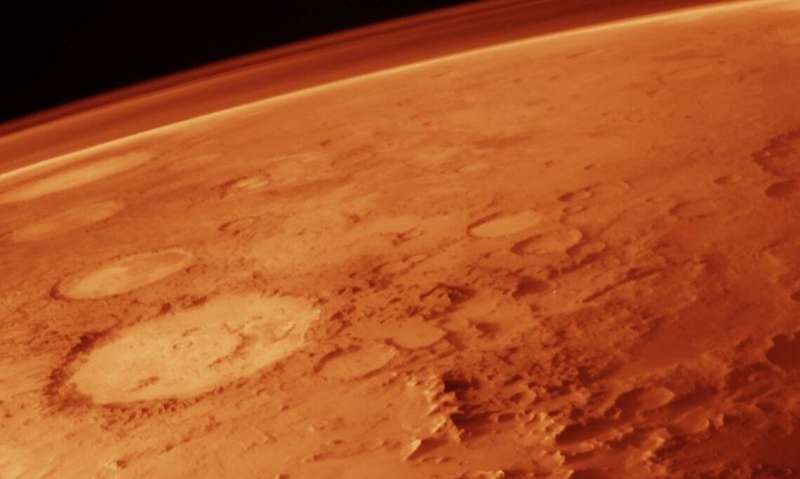Credit: CC0 Public Domain
The ESA-Roscosmos ExoMars Trace Gas Orbiter is investigating the martian atmosphere. Discovering new gases related to active process and looking for their sources is a key goal of the mission. ExoMars has discovered hydrogen chloride for the first time. It appeared during a global dust storm in 2018 and disappeared again afterwards.
The detection was made in both hemispheres simultaneously so it is unlikely to come from volcanic activity. Seasonal change that triggers dust activity is thought to be the driving force behind the observation. Salt in the dusty surface—left over from when Mars had water on its surface earlier in its history—reacts with water vapor in the atmosphere to release chlorine. The chlorine and hydrogen react to create hydrogen chloride gas. The discovery of this new type of gas requires a change in understanding of Mars' global atmospheric chemistry and processes.
Credit: ESA - European space Agency
Provided by European Space Agency
























